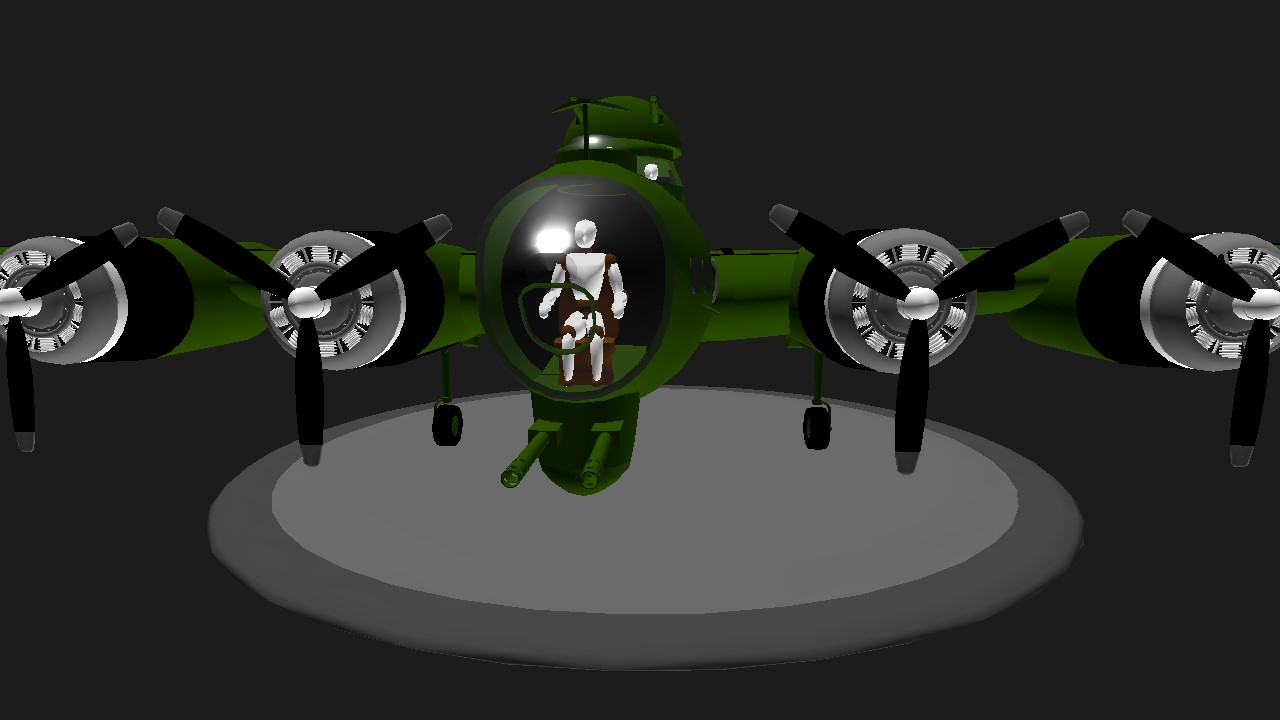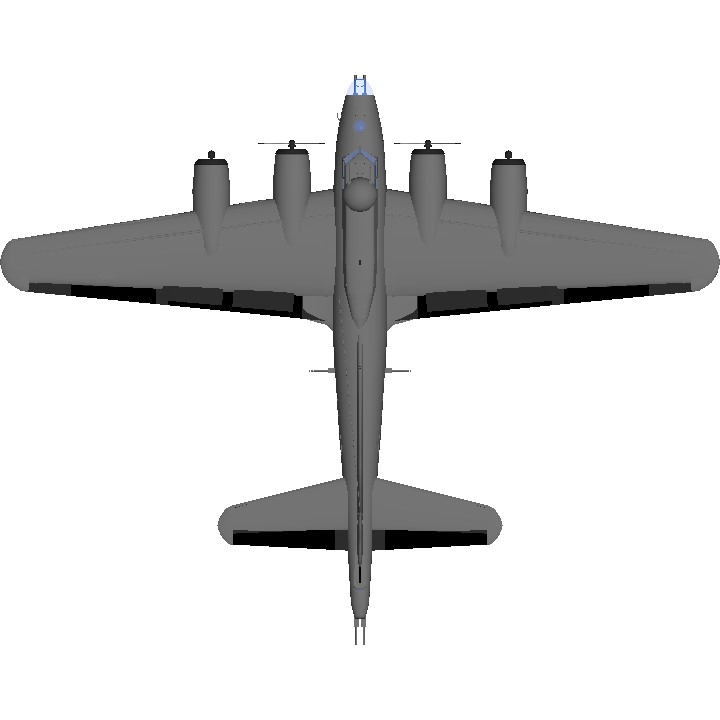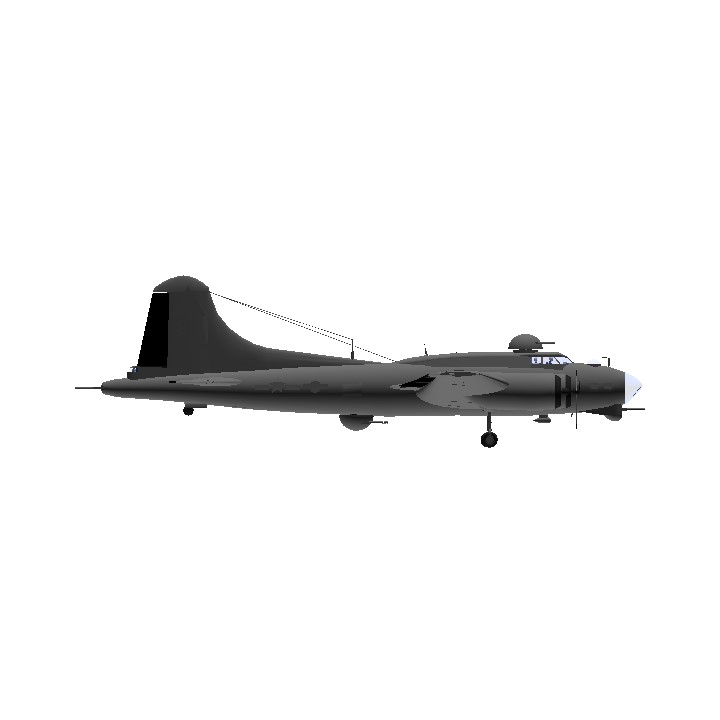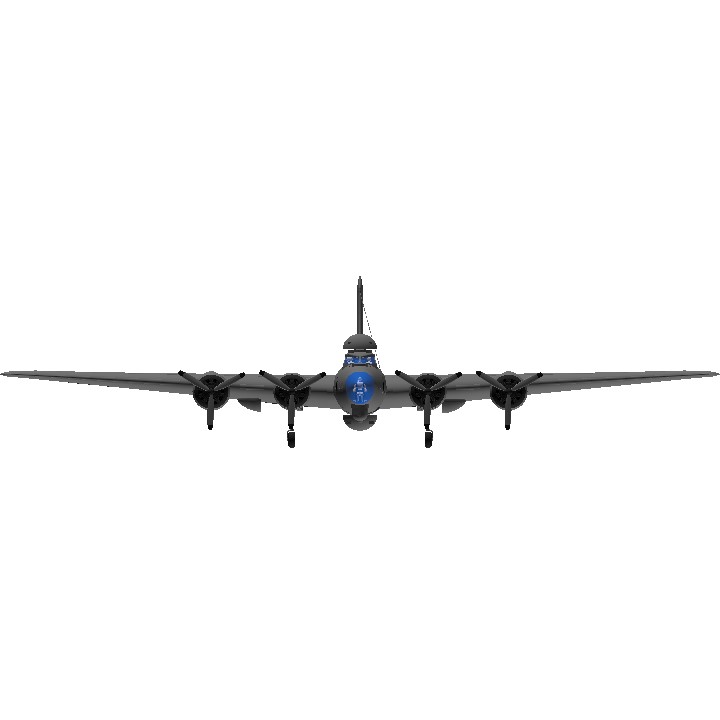B-17 Flying Fortress three propellor blades(Please read original post for instructions)
The Boeing B-17 Flying Fortress is a four-engined heavy bomber developed in the 1930s for the United States Army Air Corps (USAAC). Fast and high-flying for a bomber of its era, the B-17 was used primarily in the European Theater of Operations and dropped more bombs than any other aircraft during World War II. It is the third-most produced bomber of all time, behind the four-engined Consolidated B-24 Liberator and the multirole, twin-engined Junkers Ju 88. It was also employed as a transport, antisubmarine aircraft, drone controller, and search-and-rescue aircraft.In a USAAC competition, Boeing's prototype Model 299/XB-17 outperformed two other entries but crashed, losing the initial 200-bomber contract to the Douglas B-18 Bolo. Still, the Air Corps ordered 13 more B-17s for further evaluation, then introduced it into service in 1938. The B-17 evolved through numerous design advances[4][5] but from its inception, the USAAC (later, the USAAF) promoted the aircraft as a strategic weapon. It was a relatively fast, high-flying, long-range bomber with heavy defensive armament at the expense of bombload. It also developed a reputation for toughness based upon stories and photos of badly damaged B-17s safely returning to base.The B-17 saw early action in the Pacific War, where it conducted raids against Japanese shipping and airfields.[6] But it was primarily employed by the USAAF in the daylight strategic bombing campaign over Europe, complementing RAF Bomber Command's night-time area bombing of German industrial, military and civilian targets.[7] Of the roughly 1.5 million tons of bombs dropped on Nazi Germany and its occupied territories by U.S. aircraft, over 640 000 tons (42.6%) were dropped from B-17s.[8]As of November 2022, four aircraft remain airworthy, none flown in combat. Dozens more are in storage or on static display. The oldest of these is a D-series flown in combat in the Pacific on the first day of the United States' involvement in World War II.
Specifications
General Characteristics
- Predecessor B-17 Flying Fortress (with fully automatic aiming guns!!!!)
- Created On Android
- Wingspan 97.1ft (29.6m)
- Length 76.9ft (23.5m)
- Height 22.8ft (7.0m)
- Empty Weight 46,851lbs (21,251kg)
- Loaded Weight 58,257lbs (26,425kg)
Performance
- Horse Power/Weight Ratio 0.291
- Wing Loading 41.3lbs/ft2 (201.6kg/m2)
- Wing Area 1,411.1ft2 (131.1m2)
- Drag Points 27962
Parts
- Number of Parts 482
- Control Surfaces 7
- Performance Cost 2,172





w fix
people please do not use 4 blades for your b17 thank you
I kinda saw what happened with the original post and fixed the blades and other stuff.